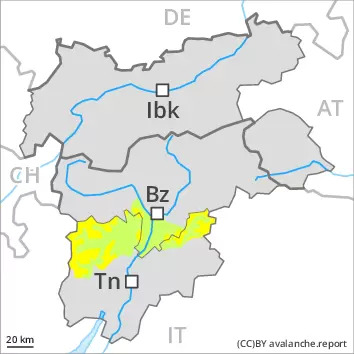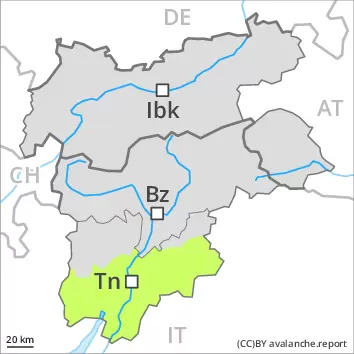
Danger level
 | treeline |
|  |
|  | ||||
|  |
|  |

Wind slabs and weakly bonded old snow represent the main danger.
As a consequence of new snow and a strong northwesterly wind, avalanche prone wind slabs will form in all aspects. They are to be avoided especially in extremely steep terrain. Avalanches can in some places be released, even by a single winter sport participant and reach medium size. The avalanche prone locations are prevalent and are barely recognisable because of the poor visibility. In the regions neighbouring those that are subject to danger level 3 (considerable) the avalanche danger is higher.
The current avalanche situation calls for experience in the assessment of avalanche danger and great restraint.
Snowpack
dp.6: cold, loose snow and wind
dp.1: deep persistent weak layer
Over a wide area 5 to 10 cm of snow, and even more in some localities, will fall until Monday. The wind will be strong to storm force. The fresh snow and the mostly small wind slabs that are being formed by the northwesterly wind will be deposited on soft layers. In the course of the day the wind slabs will increase in size once again. In some cases the various wind slabs have bonded still only poorly with each other and the old snowpack. Towards its base, the snowpack is faceted, especially on wind-protected shady slopes. Whumpfing sounds and the formation of shooting cracks when stepping on the snowpack are a clear indication of a weakly bonded snowpack.
Tendency
As a consequence of the sometimes storm force wind the wind slabs will increase in size additionally on Tuesday.




